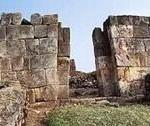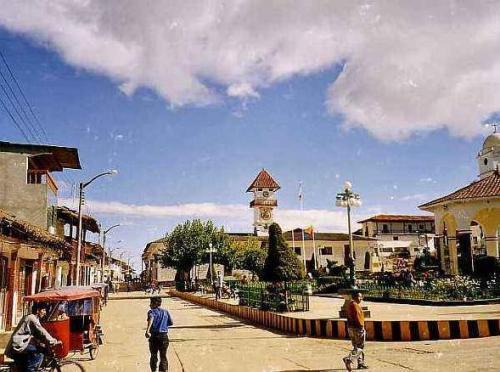Ayabaca, Piura, Peru
Suggest Place to Visit
1191
Track to location with GPS |
 |
Ayabaca was populated 10,000 years ago BC. by hunter gatherers, later venturing into the area by various Amazonian and mountain groups. In the years 400 to 200 a.c. we see the influence of Cupisnique, Chavín and Amazónico. From this time are the Samanga petroglyphs. In the so-called stage of REGIONAL DEVELOPMENTS, local lordships and identities were consolidated. The WARI empire (700-1000 years BC) was partially integrated into the Ayabaca manors.
During the States and Regional Lordships the GUAYACUNDOS are consolidated with 3 important lordships; CAXAS, CALLAUAS and AYAHUACAS, of common origin They fall under the rule of the Inca empire after a tenacious resistance.
After the territory was conquered, the population was transferred to other places, with inhabitants loyal to the Inca settling in the region. During the Spanish conquest it became dependent on the Diocese of Trujillo. In the process of independence, Piura is considered a Province of the Department of Trujillo, with Ayabaca as a hamlet.
In 1828 Ayabaca was elevated to the category of a town in the province of Piura. In 1857 the District of Ayabaca was created, in 1861 it became a province with its capital Huancabamba, for later by law of January 14, 1865 it was dismembered into 2 provinces: Ayabaca and Huancabamba.
Located in the north of the country, at the western end of the Andes Mountains. It limits to the North with the Republic of Ecuador, to the South with the province of Morropón and Huancabamba, to the East with the Republic of Ecuador and the province of Huancabamba, to the West with the Province of Sullana and Piura.
Extension: 5,230.68 Km2.
Capital: Ayabaca
Population: 134,422 hab.
Climate: The lowest point in the province is in the Suyo District with less than 200 m.a.s.l. and the highest is in the District of Ayabaca in Cerro Negro at 3,990 m.a.s.l. The variety of altitude determines a great climatic variety that goes from dry and hot to very humid and accentuated cold, the average temperature is 14 ° C.
ACCESS ROADS
From Piura by the Panamericana Norte highway you reach Sullana, from Sullana to Paimas the road is asphalted until the middle of this route, then there is an unpaved highway and then Carrozable trail to Ayabaca.
MAIN TOURIST ATTRACTIONS
In the city
Matríz Church.-: ´´Our Mrs. Del Pilar´´, where the Image of Mr. Cautivo de Ayabaca is located, a miraculous image that attracts faithful not only nationally but also internationally.
Ayabaca Museum.- Tourist Cultural Association ´´The children of the Sun that is born´´, Archaeological Museum located in Cáceres street No 468.
Orchid Nursery.- Where you can see a beautiful variety of Orchids belonging to S. Angel Seminario Santur.
Around the city
Ruinas de Aypate.- Main tourist attraction of pre-Columbian origin, an archaeological monument 32 km from Ayabaca, it has been considered the MacchuPicchu of the North for the material used, as well as for the disposition of its constructions.
Chocán Thermal Baths.- 12 km from Ayabaca, in the village of Chocán, considered the only thermal baths in the department. From stones embedded in the rocks, crystalline water gushes out, which in the early hours of the day remains hot and as the sun appears it cools down.
Petroglyphs of Samanga.- 45 km from Ayabaca. It constitutes the largest complex of Petroglyphs ideographic writing on large stones with features of the Chavín culture.
Valley of Olleros.- 20 km. from Ayabaca, where the important find of ´´Mr. De Olleros´´, local King, testimony of the rich past Ayabaquino. Closed tombs, funeral urns and a variety of Crafts are appreciated.
Lagunas de Huamcabamba.- In front of the Aypate hill (32 km from Ayabaca) and approximately 3,500 meters above sea level there are a set of 7 lagoons with exceptional characteristics, one of them especially is of exceptional beauty.
TRADITIONAL MEDICINE
Activity developed by healers, herbalists and others. In the city of Ayabaca and other places in the province, the people who dedicate themselves to this activity are widely known.
FOLKLORE
In Ayabaquino folklore, the Marinera Serrana stands out, which is danced fast and does not use a handkerchief. As well as the Cumanas that are spoken compositions that have rhyme and are played on the guitar.
Comments
We don´t have yet any comments about:
City of Ayabaca
City of Ayabaca
Be the first to leave a comment as it is very important to inform other people
Outros locais a visitar
Within a radius of 20 km from:City of Ayabaca
Complexo Arqueológico de Aypate, uma joia escondida |
| 0,1 Km |
 |
Hotel reservation near City of Ayabaca within a radius of 20 km
No results
Why to book with ROTAS TURISTICAS
The best prices
Our partnerships with the world´s largest operators offer research on the best market prices.
More options
At Rotas Turisticos you can book the hotel, buy the air ticket, book the transfer from the airport to the hotel and vice versa, book the local excursions, rent the car, take travel insurance and consult the places to visit and where to go.
Holiday Tips & Destinations
Hundreds of holiday destinations with all the options that allow you to easily choose the destination that best suits your dream vacation.
ROTAS TURISTICAS
Links





